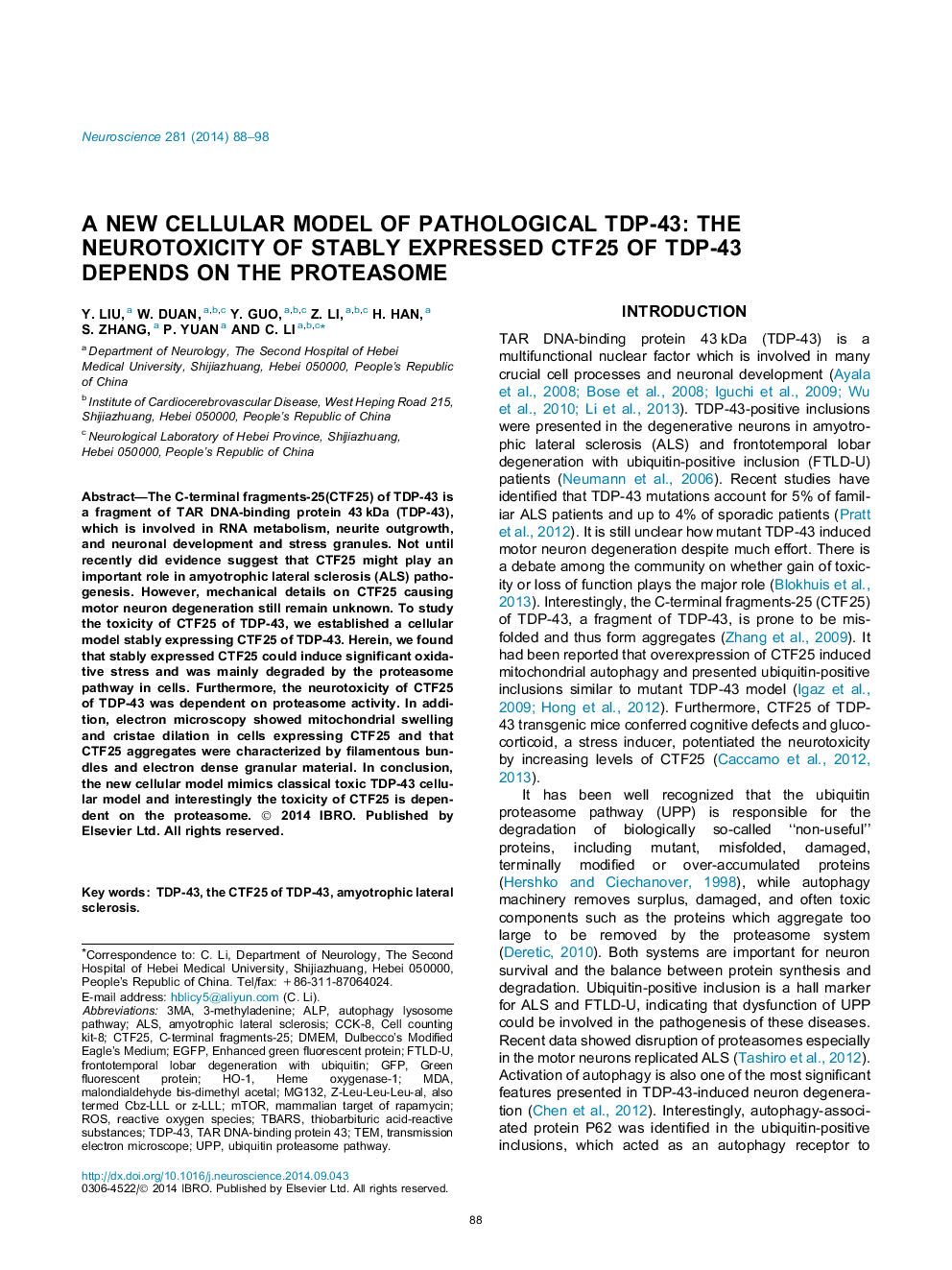| Article ID | Journal | Published Year | Pages | File Type |
|---|---|---|---|---|
| 6273248 | Neuroscience | 2014 | 11 Pages |
â¢We first established a new cellular model of pathological TDP-43.â¢The stably expressed CTF25 was mainly degraded by proteasome, not by autophagy.â¢The stably CTF25 induced oxidative stress was mainly dependent on the proteasome.â¢The stably CTF25 induced mitochondrial damage was mainly dependent on the proteasome.
The C-terminal fragments-25(CTF25) of TDP-43 is a fragment of TAR DNA-binding protein 43Â kDa (TDP-43), which is involved in RNA metabolism, neurite outgrowth, and neuronal development and stress granules. Not until recently did evidence suggest that CTF25 might play an important role in amyotrophic lateral sclerosis (ALS) pathogenesis. However, mechanical details on CTF25 causing motor neuron degeneration still remain unknown. To study the toxicity of CTF25 of TDP-43, we established a cellular model stably expressing CTF25 of TDP-43. Herein, we found that stably expressed CTF25 could induce significant oxidative stress and was mainly degraded by the proteasome pathway in cells. Furthermore, the neurotoxicity of CTF25 of TDP-43 was dependent on proteasome activity. In addition, electron microscopy showed mitochondrial swelling and cristae dilation in cells expressing CTF25 and that CTF25 aggregates were characterized by filamentous bundles and electron dense granular material. In conclusion, the new cellular model mimics classical toxic TDP-43 cellular model and interestingly the toxicity of CTF25 is dependent on the proteasome.
